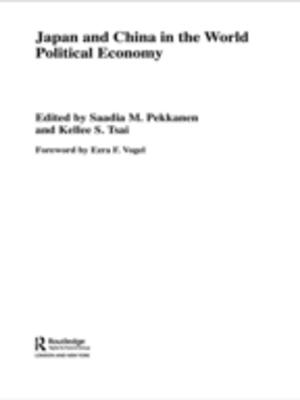Dignity, Degrading Treatment and Torture in Human Rights Law
The Ends of Article 3 of the European Convention on Human Rights
Nonfiction, Reference & Language, Law, Court Rules, Civil Rights| Author: | Elaine Webster | ISBN: | 9781317516002 |
| Publisher: | Taylor and Francis | Publication: | April 27, 2018 |
| Imprint: | Routledge | Language: | English |
| Author: | Elaine Webster |
| ISBN: | 9781317516002 |
| Publisher: | Taylor and Francis |
| Publication: | April 27, 2018 |
| Imprint: | Routledge |
| Language: | English |
Although scholars have shown longstanding interest in the boundaries of interpretation of the right not to be subjected to torture and other prohibited harm, the existing body of work does not sufficiently reflect the significance of the interpretive scope of degrading treatment. This book argues that the degrading treatment element of the right is a crucial site of analysis, in itself and for understanding the parameters of the right as a whole. It addresses how, methodologically, the scope of meaning and application of the right not to be subjected to degrading treatment should best be identified and considers the implications thereof. It systematically examines the diverse aspects of degrading treatment’s scope, from foundations of legal interpretation to the drivers of humiliation. It draws on wide-ranging literature and extensive analysis of more than 1,500 judgments of the European Court of Human Rights, which has pioneered the right’s interpretive growth. The book aims to explore how the interpretive possibilities, and limits, of the right not to be subjected to degrading treatment turn upon the axes of human dignity and state responsibility, and aims to show how this right’s protection can be achieved as well as limited through processes of interpretation.
Dignity, Degrading Treatment and Torture in Human Rights Law provides interpreters with analytical tools to advance the application of the right not to be subjected to torture, cruel, inhuman or degrading treatment or punishment in international, regional and domestic human rights law. It will appeal to all who have an interest in understanding the right’s meaning, development, and potential scope of application, as well as those with an interest in methodologies of human rights interpretation.
Although scholars have shown longstanding interest in the boundaries of interpretation of the right not to be subjected to torture and other prohibited harm, the existing body of work does not sufficiently reflect the significance of the interpretive scope of degrading treatment. This book argues that the degrading treatment element of the right is a crucial site of analysis, in itself and for understanding the parameters of the right as a whole. It addresses how, methodologically, the scope of meaning and application of the right not to be subjected to degrading treatment should best be identified and considers the implications thereof. It systematically examines the diverse aspects of degrading treatment’s scope, from foundations of legal interpretation to the drivers of humiliation. It draws on wide-ranging literature and extensive analysis of more than 1,500 judgments of the European Court of Human Rights, which has pioneered the right’s interpretive growth. The book aims to explore how the interpretive possibilities, and limits, of the right not to be subjected to degrading treatment turn upon the axes of human dignity and state responsibility, and aims to show how this right’s protection can be achieved as well as limited through processes of interpretation.
Dignity, Degrading Treatment and Torture in Human Rights Law provides interpreters with analytical tools to advance the application of the right not to be subjected to torture, cruel, inhuman or degrading treatment or punishment in international, regional and domestic human rights law. It will appeal to all who have an interest in understanding the right’s meaning, development, and potential scope of application, as well as those with an interest in methodologies of human rights interpretation.















